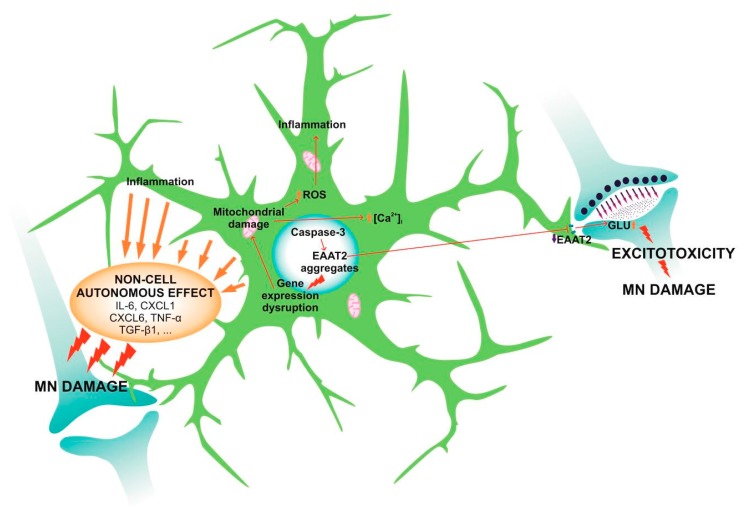Figure 1.
During ALS astrocytes undergo pathological changes, which affect their physiological functions and lead to the reduction of motor neuron (MN) survival. ALS astrocytes have decreased levels of EAAT2, which are cleaved by Caspase-3 and create aggregates within astrocytic nucleus. Therefore, the number of EAAT2 receptors on membranes is reduced and the astrocytic ability to buffer glutamate (GLU) from synapses is impaired. Increased levels of GLU cause excessive neuronal stimulation that damages MNs via the process termed excitotoxicity. The nuclear aggregates not only damage MNs but also astrocytes themselves, as they cause gene expression disruption and subsequently, mitochondrial damage. Moreover, astrocytes secrete a range of inflammatory soluble factors in response to the intracellular damage (interleukins, cytokines...), which strongly reduce MN survival via the so-called non-cell autonomous effect.

